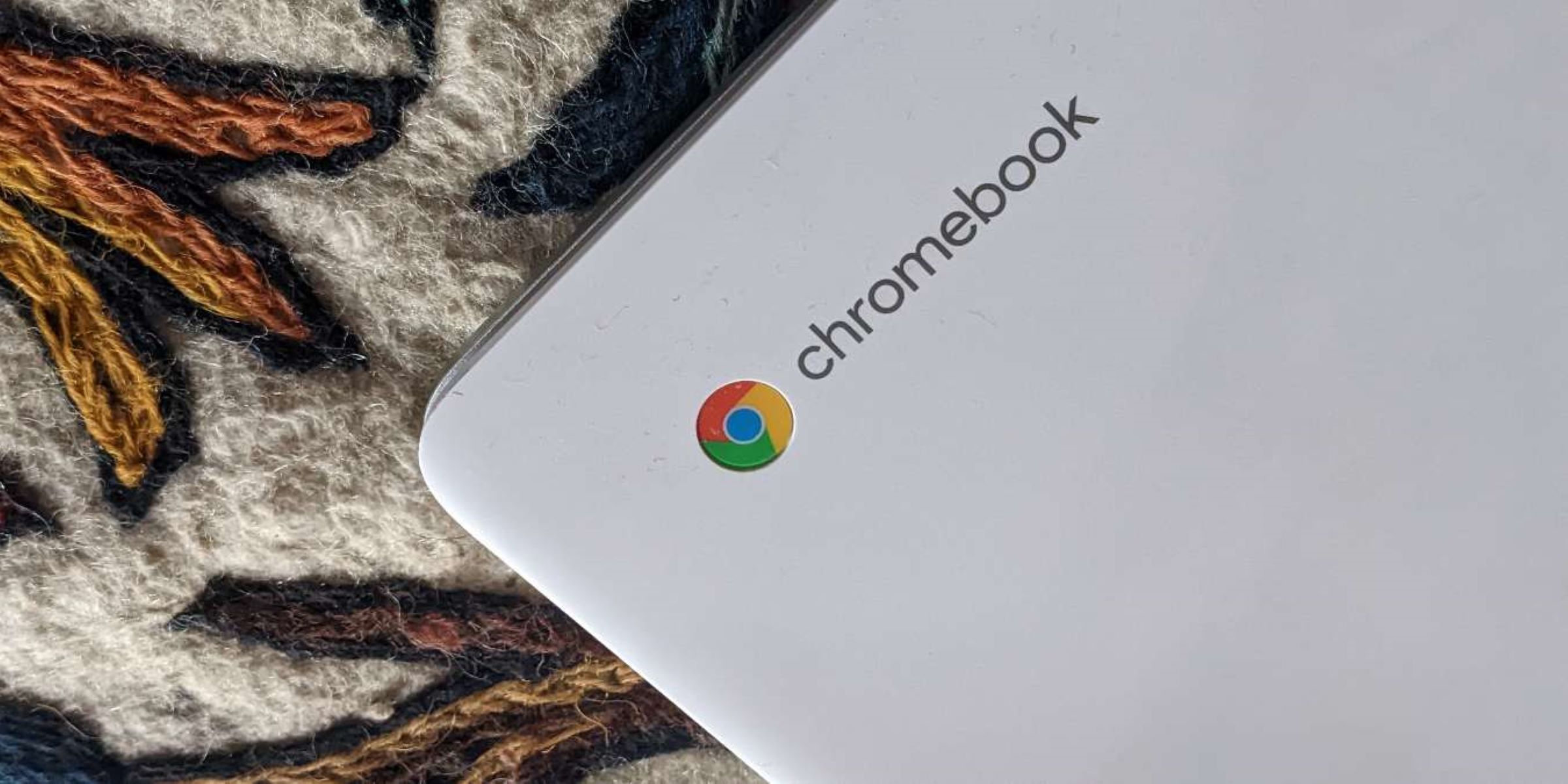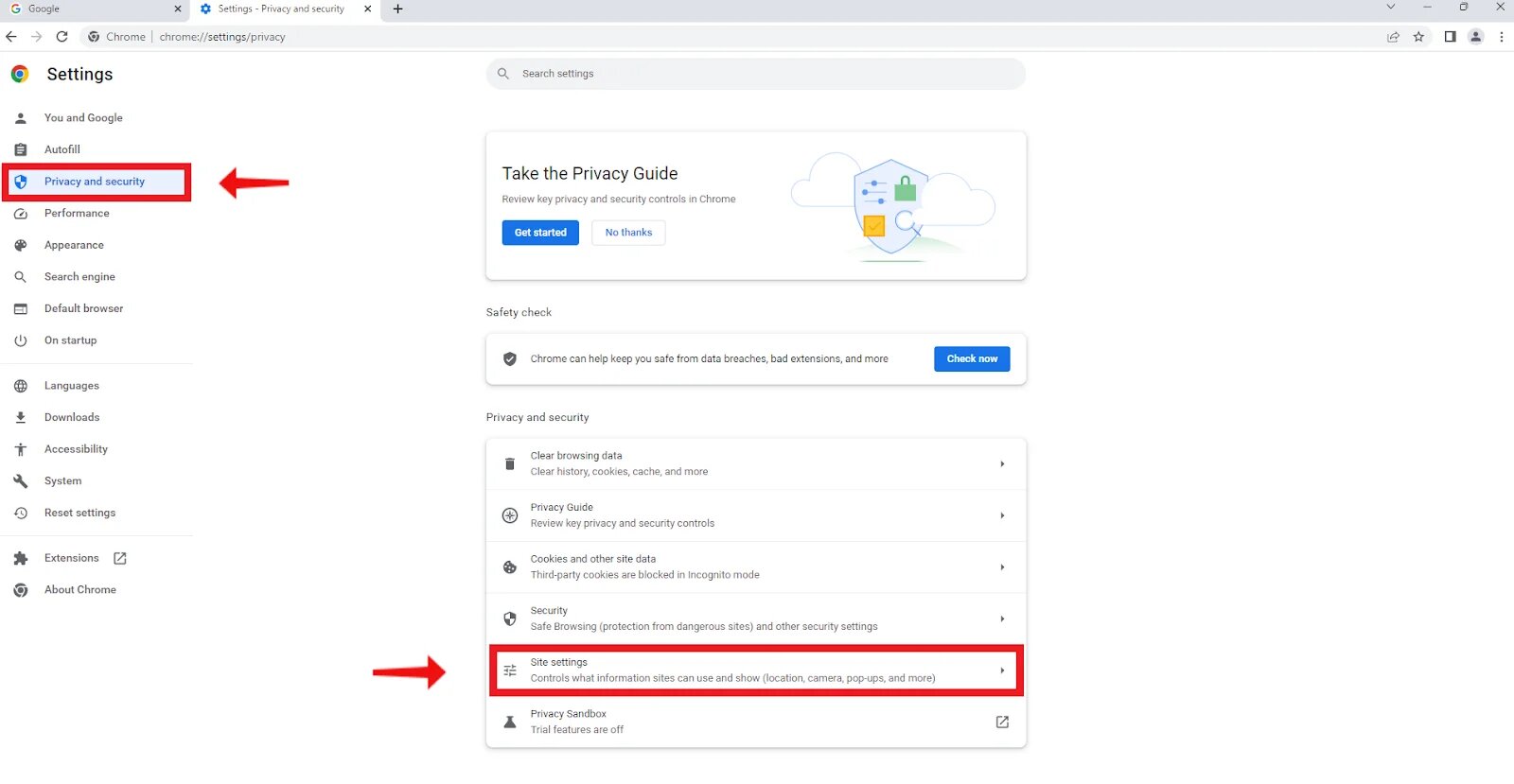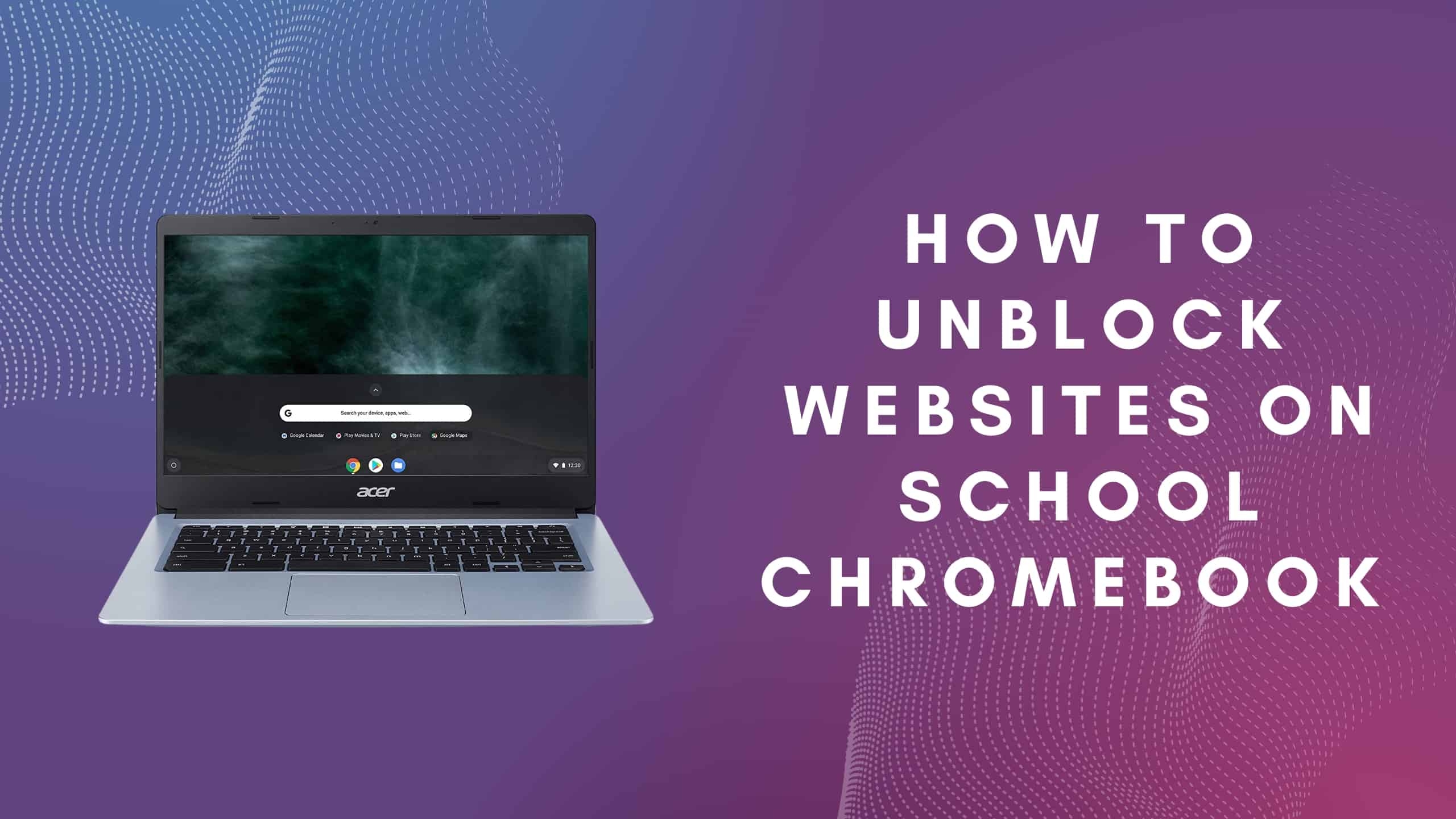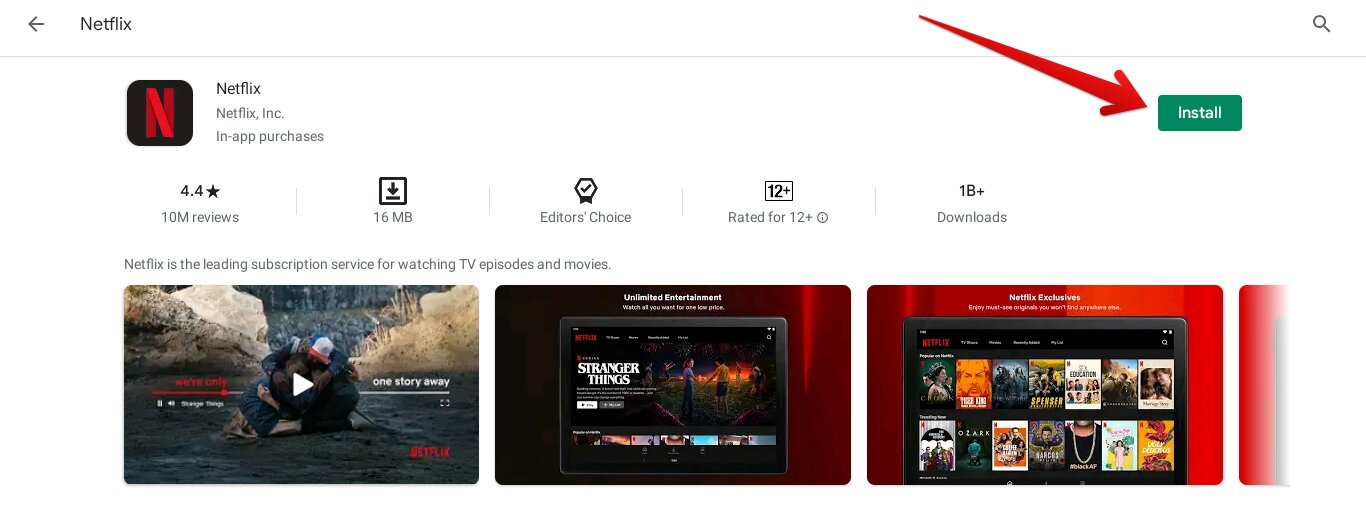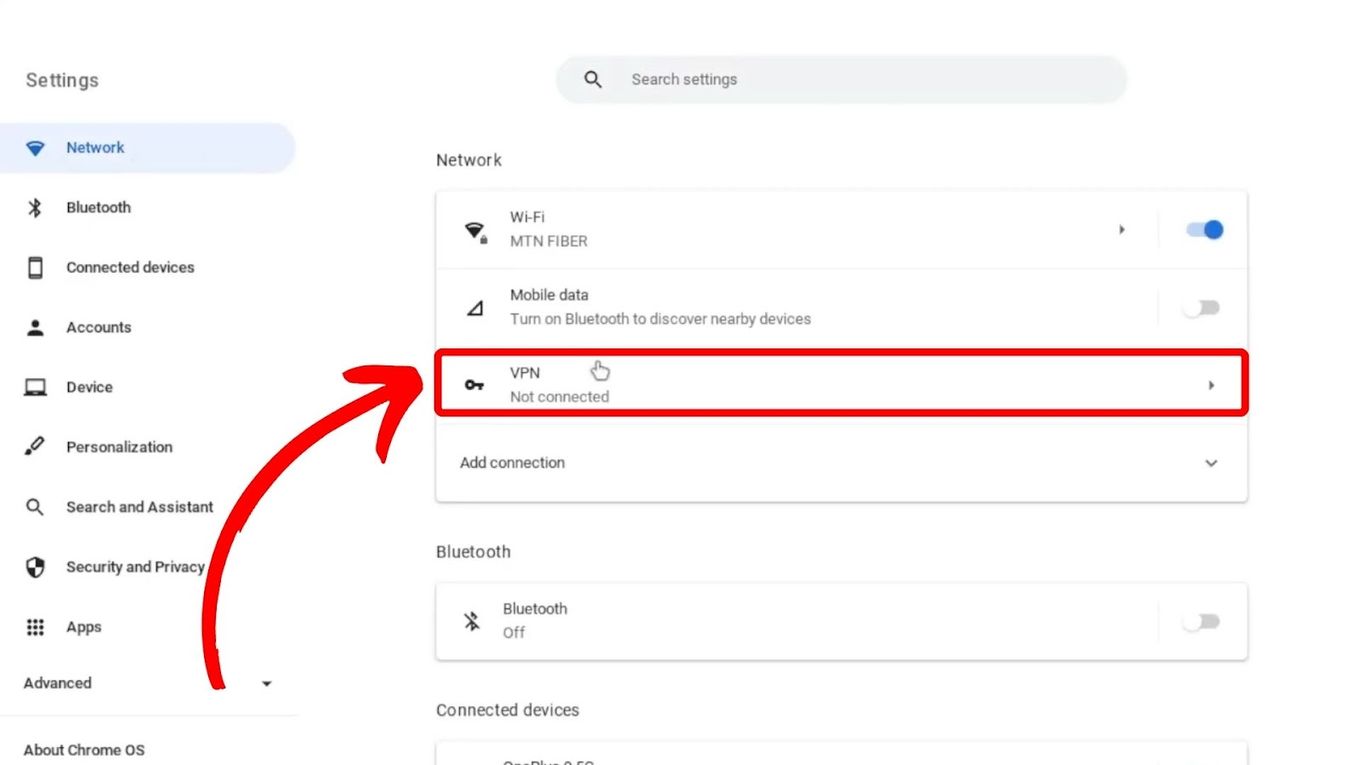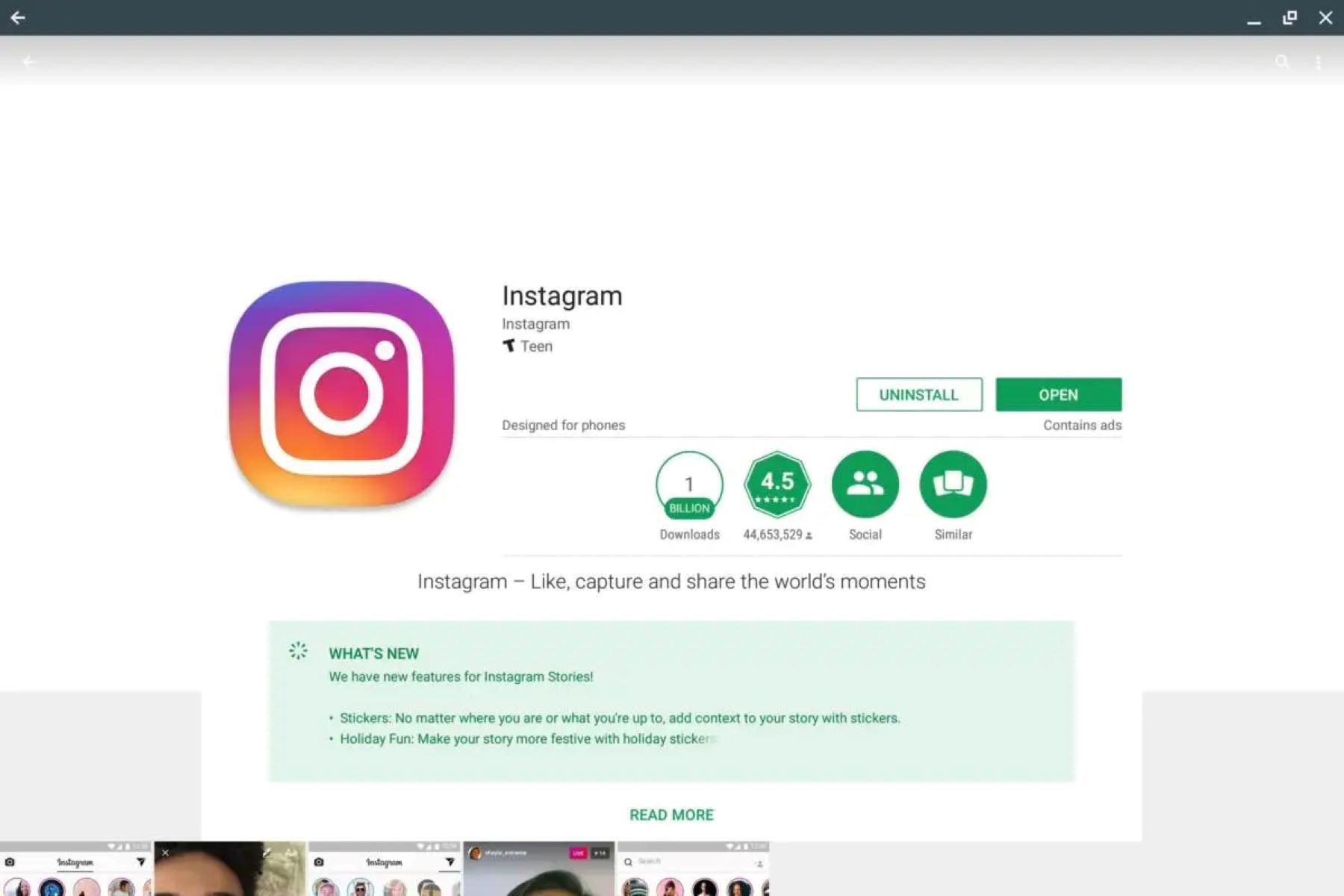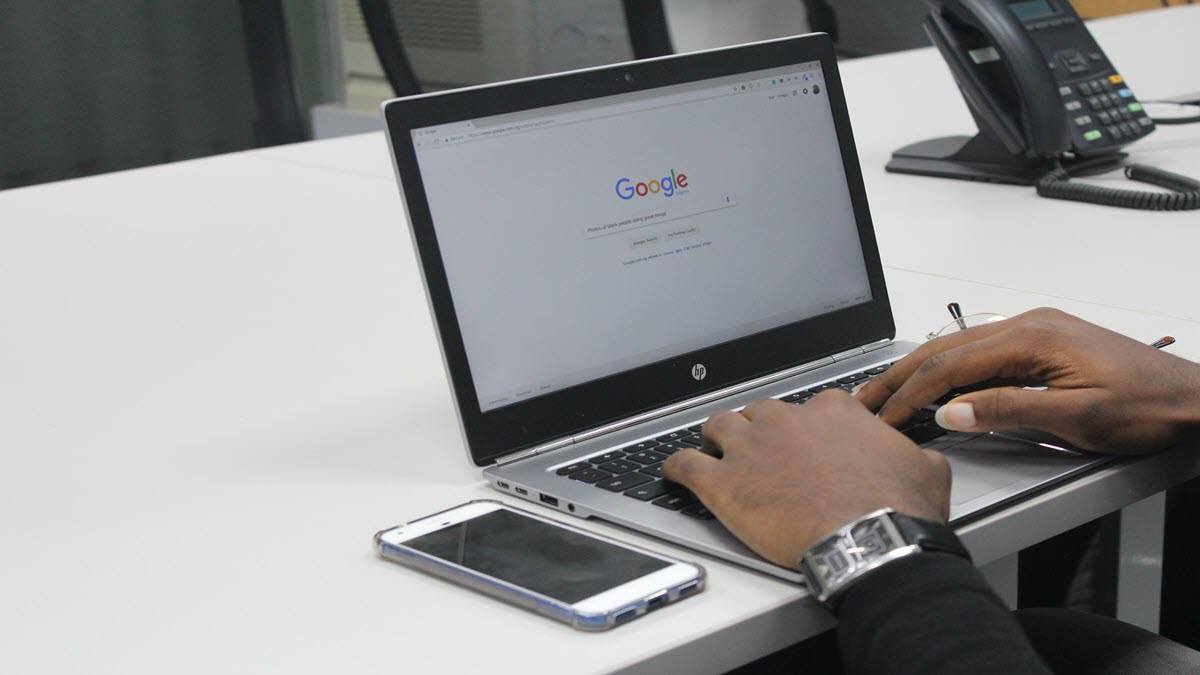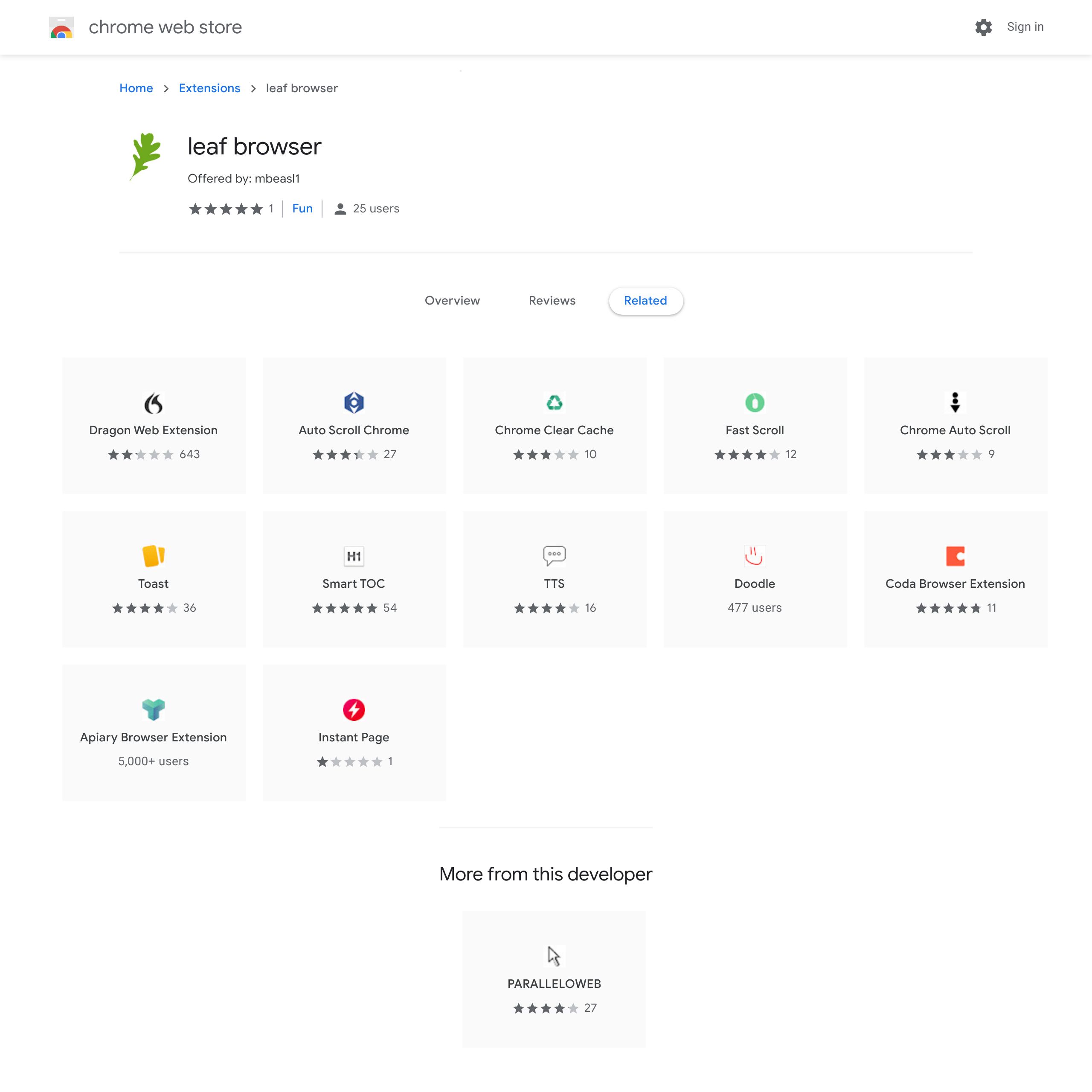Introduction
Accessing websites on a school Chromebook can sometimes be a challenge due to the strict filtering policies implemented by educational institutions. While these restrictions are put in place to ensure a safe browsing experience for students, they can often limit access to beneficial resources or prevent students from visiting sites they may need for research or other educational purposes.
Fortunately, there are various methods available that can help you unblock websites on a school Chromebook. In this article, we will explore different approaches that can bypass the restrictions and grant you access to blocked websites.
It is essential to remember that attempting to bypass school policies should be done responsibly and with an understanding of the potential consequences. Make sure to use these methods for educational purposes only and to respect the school’s guidelines.
In the following sections, we will delve into the different methods you can utilize to unblock websites on your school Chromebook. From using VPNs and proxy websites to changing DNS settings and seeking permission from the school administration, we will cover various approaches to help you regain access to blocked websites.
It’s important to note that every school may have different network policies and security measures in place, so not all methods discussed may work for every situation. However, exploring these options will give you a good starting point and increase your chances of successfully unblocking websites on your school Chromebook.
Let’s get started and begin exploring the methods you can use to overcome restrictions and access the websites you need on your school Chromebook.
Why are websites blocked on school Chromebooks?
Schools often block certain websites on Chromebooks for a variety of reasons, including:
1. Maintain a focused learning environment: The primary purpose of school-issued Chromebooks is to facilitate educational activities. By blocking irrelevant websites, schools aim to minimize distractions and ensure students stay engaged in their studies.
2. Protect students from harmful content: Schools have a responsibility to protect students from accessing inappropriate or explicit content. Blocking certain websites helps maintain a safe browsing environment and reduces the risk of students stumbling upon harmful material.
3. Comply with legal requirements: Schools must abide by legal obligations regarding students’ online safety in line with applicable laws and regulations. Blocking websites that contain prohibited or illegal content helps schools meet these requirements and protect their students.
4. Conserve bandwidth and enhance network performance: By restricting access to non-essential websites, schools can conserve their network bandwidth and ensure optimal performance for educational applications and resources.
5. Prevent cyberbullying and online harassment: Blocking certain social media platforms and online forums helps reduce the incidents of cyberbullying and online harassment among students, fostering a safer online environment.
While these restrictions serve a valid purpose, there may be instances where you need to access websites that are blocked on your school Chromebook for legitimate reasons. In the following sections, we will discuss methods to unblock websites on a school Chromebook, ensuring you strike a balance between adhering to school policies and accessing the resources you need for your education.
Different methods to unblock websites on school Chromebooks
When faced with blocked websites on your school Chromebook, there are several methods you can try to bypass the restrictions. Let’s explore these methods:
1. Using a VPN: A Virtual Private Network (VPN) can help you access blocked websites by establishing a secure connection to a server outside your school’s network. This disguises your IP address and allows you to browse the internet with increased privacy and freedom. There are numerous VPN services available, both free and paid, that you can install on your Chromebook.
2. Using a proxy website or extension: Proxy websites act as intermediaries between your school’s network and the website you want to visit. By accessing the blocked website through a proxy, you can bypass the network restrictions. Alternatively, you can also use proxy extensions directly on your Chromebook.
3. Changing DNS settings: DNS (Domain Name System) is responsible for translating web addresses into IP addresses. Your school’s network may have DNS settings that restrict access to certain websites. By changing your DNS settings to a public DNS server, such as Google DNS or Cloudflare DNS, you can potentially bypass the website blocks imposed by your school.
4. Requesting website unblocking from the school administration: If you have a legitimate reason for accessing a blocked website, you can consider reaching out to the school administration or IT department. Explain your need and provide supporting evidence to request that they unblock the website for educational purposes.
5. Using alternative web browsers: While Chrome is the default browser on Chromebooks, you can try using alternative browsers like Firefox or Opera. These browsers may have different filtering mechanisms or security settings, allowing you to access blocked websites that may be restricted on Chrome.
6. Using a mobile hotspot: If your school allows personal devices or you have access to a mobile hotspot, you can connect your Chromebook to it. By bypassing the school’s network altogether, you can gain unrestricted access to the internet and visit blocked websites.
Remember, it is crucial to be responsible when using these methods to unblock websites on your school Chromebook. Only access blocked websites for legitimate educational purposes and follow your school’s guidelines and policies regarding internet usage.
In the following sections, we will delve deeper into each method, providing step-by-step instructions on how to implement them. By exploring these methods and techniques, you can increase your chances of successfully unblocking websites on your school Chromebook.
Method 1: Using a VPN
One effective way to unblock websites on your school Chromebook is by using a Virtual Private Network (VPN). A VPN not only provides you with privacy and security but also allows you to bypass network restrictions and access blocked websites. Here’s how you can use a VPN:
Step 1: Choose a VPN service that is compatible with Chromebook. There are numerous VPN providers available, both free and paid. Look for one that offers a Chromebook app or can be set up manually on your device.
Step 2: Install and set up the VPN app on your Chromebook. Follow the instructions provided by the VPN service to download and add the app to your device. If manual configuration is required, the VPN service will guide you through the process.
Step 3: Launch the VPN app and connect to a server. Once the VPN app is installed, open it and select a server location. It’s advisable to choose a server location outside of your school’s network to maximize your chances of accessing blocked websites.
Step 4: Connect to the VPN server. Click on the “Connect” button or follow the instructions provided by the VPN app to establish a secure connection to the chosen server. This will encrypt your internet traffic and assign you a new IP address, making it appear as if you are browsing from a different location.
Step 5: Access the blocked website. After connecting to the VPN server, you should now be able to access blocked websites on your school Chromebook. Open your browser and try visiting the website that was previously restricted.
It’s important to note that while VPNs are effective in bypassing network restrictions, they may not always guarantee access to all blocked websites. In some instances, schools may have extra measures in place to detect and block VPN traffic. Therefore, it’s recommended to use reputable VPN services and regularly switch servers if needed.
Additionally, be sure to follow your school’s guidelines and policies when using a VPN. Use it solely for educational purposes and respect any restrictions or limitations put in place by your educational institution.
In the next section, we will discuss another method you can try to unblock websites on your school Chromebook – using a proxy website or extension.
Method 2: Using a Proxy Website or Extension
If a VPN is not available or suitable for your needs, another method to unblock websites on your school Chromebook is by using a proxy website or extension. Proxy services act as intermediaries between your browser and the website you want to access, allowing you to bypass network restrictions. Here’s how you can use a proxy:
Step 1: Find a reliable proxy website or extension. There are several proxy websites available that allow you to access blocked websites without directly connecting to them. You can also search for proxy extensions specifically designed for Chromebooks.
Step 2: Visit the proxy website or install the proxy extension. Follow the instructions provided by the proxy service to access their website or install the extension on your Chromebook.
Step 3: Enter the URL of the blocked website. Once you are on the proxy website or have the extension installed, you will typically find a URL bar where you can enter the URL of the website you want to access. Enter the address of the blocked website and click on the “Go” or “Enter” button.
Step 4: Access the blocked website through the proxy. The proxy website or extension will fetch the content of the blocked website and display it to you. It acts as an intermediary, making it appear as if you are accessing the website indirectly through the proxy server.
Step 5: Browse the website. Once the blocked website is loaded through the proxy, you can browse its content just like you would on any other website. Keep in mind that the performance may be slower than accessing the website directly, depending on the quality of the proxy service.
It’s important to note that not all proxy websites or extensions are reliable or secure. Be cautious when using them and ensure that the proxy service you choose is reputable and trustworthy. Some proxy services may contain ads or track your browsing data, so exercise caution and be mindful of your privacy.
Lastly, remember to use proxy services responsibly and for legitimate educational purposes only. Abide by your school’s policies and guidelines regarding internet usage and respect any restrictions put in place by your educational institution.
In the next section, we will explore another method to unblock websites on your school Chromebook: changing DNS settings.
Method 3: Changing DNS Settings
If you’re unable to access blocked websites on your school Chromebook using a VPN or proxy, you can try changing the Domain Name System (DNS) settings. DNS translates web addresses into IP addresses, and your school’s network may have DNS settings that restrict access to certain websites. Here’s how you can change your DNS settings:
Step 1: Open the Chromebook settings. Click on the clock in the bottom-right corner of your screen, and then click on the gear icon to access the settings.
Step 2: Navigate to the Network settings. In the settings menu, scroll down and click on “Network” in the left-hand sidebar.
Step 3: Click on the Wi-Fi network you are connected to. Under the “Wi-Fi” section, you will see a list of available networks. Click on the network you are currently connected to.
Step 4: Click on the “Edit” button. After selecting your Wi-Fi network, you will see an “Edit” button. Click on it to access the advanced settings for that network.
Step 5: Scroll down to the “Internet connection” section. In this section, you will find the “Name servers” option.
Step 6: Change the DNS settings. By default, the DNS settings are set to “Automatic.” Click on the drop-down menu and select “Custom name servers” or “Manual”. Enter the preferred DNS server addresses you want to use. Common public DNS servers include Google DNS (8.8.8.8 and 8.8.4.4) and Cloudflare DNS (1.1.1.1 and 1.0.0.1).
Step 7: Save the settings and reconnect to the Wi-Fi network. After entering the new DNS server addresses, click on the “Save” button. Your Chromebook will then disconnect and reconnect to the Wi-Fi network with the updated DNS settings.
By changing the DNS settings on your Chromebook, you may be able to bypass the website blocks imposed by your school. However, it’s important to note that some schools may have additional measures in place to prevent DNS changes. In such cases, this method may not work.
Remember to follow your school’s guidelines and policies when changing DNS settings. Use this method responsibly and for educational purposes only.
In the next section, we will explore another approach to unblocking websites on your school Chromebook: requesting website unblocking from the school administration.
Method 4: Requesting Website Unblocking from the School Administration
If you have a legitimate educational reason for accessing a blocked website on your school Chromebook, you can consider reaching out to the school administration or IT department to request unblocking. Here’s how you can approach this method:
Step 1: Gather information and reasoning. Before making your case to the school administration, gather as much information as possible about the website you want to access. Prepare a clear and concise explanation of why you need access to the blocked website and how it will benefit your education. Make sure your reasoning is aligned with educational purposes and adheres to the school’s guidelines.
Step 2: Find the appropriate contact. Identify the correct person or department in your school to address your unblocking request. This may be the IT department, the school’s administrator, or another relevant faculty member.
Step 3: Write a formal request. Craft a polite and professional email or letter explaining your need to access the blocked website. Clearly state the website’s URL and provide a detailed explanation of its relevance to your studies or projects. Emphasize the educational value the website offers and how it can enhance your learning experience.
Step 4: Provide supporting evidence. To strengthen your request, include any supporting evidence that adds credibility to your case. This could include references to academic articles, research papers, or testimonials from teachers who can vouch for the website’s educational value.
Step 5: Submit the request and follow up. Send your request to the appropriate contact, either via email or a printed letter, and ensure that it is received. If you don’t receive a response within a reasonable timeframe, politely follow up to inquire about the status of your request.
It’s important to remember that website unblocking requests may not always be granted. Schools have their own policies and guidelines regarding network restrictions, and they prioritize student safety and academic integrity. However, if you present a valid case with strong educational reasoning, there is a possibility that your request will be considered and the website may be unblocked.
Be patient and respectful throughout the process, understanding that the final decision lies with the school administration. It’s important to abide by their guidelines and respect any restrictions that remain in place.
In the next section, we will discuss another method that you can try to unblock websites on your school Chromebook: using alternative web browsers.
Method 5: Using Alternative Web Browsers
If you’re facing website blocks on your school Chromebook, another method to consider is using alternative web browsers. While Chrome is the default browser on Chromebooks, there are other browsers available that may have different filtering mechanisms or security settings, allowing you to access blocked websites. Here’s how you can use alternative web browsers:
Step 1: Install an alternative web browser. Explore and install alternative web browsers such as Firefox, Opera, or Microsoft Edge from the Chrome Web Store. These browsers offer different features and may have varying levels of compatibility with Chromebooks.
Step 2: Launch the alternative web browser. After installation, open the newly-installed browser from your Chromebook’s app launcher or the app drawer.
Step 3: Access the blocked website through the alternative browser. Navigate to the URL of the blocked website in the address bar of the alternative browser. The website may not be restricted within the alternative browser, allowing you to access its content.
Step 4: Browse the website. Once you’ve accessed the blocked website through the alternative browser, you can browse its content just like you would on any other website. Remember, however, that the website may still be restricted when accessed through the default Chrome browser.
It’s important to note that while using an alternative web browser can sometimes bypass website blocks, it may not always guarantee unrestricted access. Some schools may have comprehensive filtering systems that apply to all web browsers installed on Chromebooks. In these cases, alternative browsers may not provide a solution to access blocked websites.
Additionally, be aware of your school’s guidelines and policies regarding the use of alternative web browsers. Some schools may have specific restrictions in place, and it’s important to respect those guidelines.
In the next section, we will explore another method to unblock websites on your school Chromebook: using a mobile hotspot.
Method 6: Using a Mobile Hotspot
If you have access to a personal device or a mobile hotspot, another method to consider for unblocking websites on your school Chromebook is by using a mobile hotspot connection. By connecting your Chromebook to a mobile hotspot, you can bypass your school’s network restrictions and gain unrestricted access to the internet. Here’s how you can use a mobile hotspot:
Step 1: Enable the mobile hotspot on your personal device. If you have a smartphone or a device with mobile hotspot capabilities, navigate to the settings and enable the mobile hotspot feature. Follow the instructions provided by your device’s manufacturer if you are unsure how to set up a mobile hotspot.
Step 2: Connect your Chromebook to the mobile hotspot. On your Chromebook, click on the Wi-Fi symbol in the bottom-right corner of the screen. From the list of available networks, select the name of your mobile hotspot. Enter the password if prompted to establish a connection.
Step 3: Browse the internet using the mobile hotspot. Once your Chromebook is connected to the mobile hotspot, you now have access to the internet outside of your school’s network. You can now visit websites that were previously blocked on your school Chromebook.
By connecting to a mobile hotspot, you effectively bypass the network restrictions imposed by your school. However, be mindful of your mobile data usage if you have limited data plans and respect any data usage restrictions or guidelines set by your mobile service provider.
It’s important to note that not all schools allow personal devices or mobile hotspot connections on their premises. Additionally, some schools may have policies that prohibit the use of personal devices or mobile hotspots to access the internet during school hours. Make sure to understand and follow your school’s guidelines and policies regarding mobile hotspot usage.
In the next section, we will wrap up the methods discussed and provide some final insights on unblocking websites on a school Chromebook.
Conclusion
Accessing blocked websites on a school Chromebook can be a challenge, but with the right methods, it is possible to bypass the restrictions and gain access to the websites you need for educational purposes. Throughout this article, we have explored several methods that you can try to unblock websites on your school Chromebook.
Using a VPN can help you establish a secure connection to a server outside your school’s network, enabling you to browse the internet with increased privacy and freedom. Proxy websites or extensions act as intermediaries, allowing you to access blocked websites indirectly. Changing DNS settings may help in bypassing website blocks imposed by your school’s network. Requesting website unblocking from the school administration and using alternative web browsers are additional methods to consider.
If allowed by your school’s policies, using a personal device or a mobile hotspot connection can also provide you with unrestricted internet access.
Remember, it is important to use these methods responsibly and for legitimate educational purposes. Always abide by your school’s guidelines and policies regarding internet usage, respecting any restrictions or limitations that remain in place.
It’s worth noting that while these methods can be effective, they may not always guarantee access to all blocked websites. Schools have varying network policies and security measures in place, and they may employ additional measures to prevent circumvention of restrictions.
Before attempting any of these methods, consider the potential consequences and weigh the risks involved. Always prioritize your education and use these methods responsibly within the boundaries set by your school.
By exploring these different methods and approaches, you can increase your chances of successfully unblocking websites on your school Chromebook. As technology evolves, so do the methods employed by schools to restrict website access. Stay informed and adaptable, and remember to use these methods wisely for your educational benefit.







